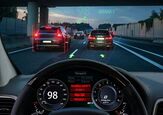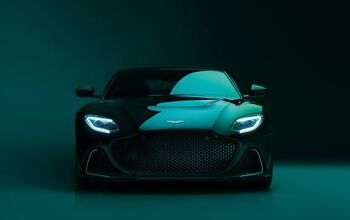It's Gonna Be a Showdown: EPA Head Says California Won't Drive U.S. Fuel Regulations

The Trump administration’s chief environmental regulator claims the Environmental Protection Agency will not pursue stricter fuel economy mandates after 2025. EPA Administrator Scott Pruitt also said California won’t call the shots for the rest of the country just because it can set its own rules on emissions.
“California is not the arbiter of these issues,” he said. Currently, California and 16 other states have pledged to maintain Obama-era emission when federal regulators decide to roll them back “but that shouldn’t and can’t dictate to the rest of the country what these levels are going to be,” according to Pruitt.
Stick that in your tailpipe, one-third of America.
Officials from California previously said they would consider relaxing their long-term fuel economy strategy if the federal government was willing to set concrete emission targets that extend through 2030. However, in an interview with Bloomberg on Tuesday, Pruitt expressed that he had absolutely no interest in making deals.
“Being predictive about what’s going to be taking place out in 2030 is really hard,” he said. “I think it creates problems when you do that too aggressively. That’s not something we’re terribly focused on right now.”
There is some truth to that. Despite Corporate Average Fuel Economy (CAFE) standards growing ever stricter, automakers have had bad years where program goals were not met. However, things have been more or less on track since 2014. But that still left some automakers, especially those with lackluster truck lineups, complaining that the rules place too much of the fuel economy burden on passenger cars. In 2011, Volkswagen said “the [CAFE] proposal encourages manufacturers and customers to shift toward larger, less efficient vehicles, defeating the goal of reduced greenhouse gas emissions.”
Another truth. Over the last decade consumer interest in trucks, sport utility vehicles, and crossover has skyrocketed. Meanwhile, the sales-weighted average fuel economy for new vehicles has hovered around 25.1 mpg since 2014 and actually took a dive in the last few months as more people decided to purchase larger vehicles.
How much that has to do with California being able to regulate itself is debatable. While stiffer mandates from the Golden State would assuredly affect the national strategy of all automakers, there is also the matter of states’ rights. It’s interesting, considering Pruitt has been an outspoken advocate of small-government conservatism, that he would want to impose federal mandates. But his time at the EPA has also seen him attempt to ease regulatory action, often at the request of corporate interests.
The fuel economy mandates are no different. When President Trump took office, automakers flocked to him to request that he ease fuel economy standards for 2022-2025. Placing Pruitt as the environmental frontman was paramount to achieving that end. Known for his boldness and inability to back down, odds are good that he won’t be discouraged by what California and environmental activists have to say in response to eased regulations.
Things are quickly coming to a head, too. The EPA has until April 1st to establish whether Obama-era CAFE standards for cars and light trucks from 2022 to 2025 are attainable or should be revised. As things stand, the new car and light truck fleet will need to average 54.5 miles per gallon by 2025. But Pruitt and Trump (especially) are likely to endorse lowered standards.
“The whole purpose of CAFE standards is to make cars more efficient that people are actually buying,” Pruitt said. “If you just come in and try to drive this to a point where the auto sector in Detroit just makes cars that people don’t want to purchase, then people are staying in older cars, and the emission levels are worse, which defeats the overall purpose of what we’re trying to achieve.”
For the record, maintaining an older vehicle is typically better for the environment than purchasing a new one — even an ultra-efficient model. However, we see what he’s getting at. The general public doesn’t take much of an interest in fuel economy when gas is affordable. But letting economy standards slip is not without hazards of its own. One only needs to look back at the oil shortages of the 1970s for an ugly reminder.
Stanley Young, spokesman for the California Air Resources Board, said the state will pursue tighter emissions limits after 2025 as a way to protect public health and mitigate climate change regardless of what the federal government decides. That echoes statements made by the group’s chair, Mary Nichols, earlier this year. While she said California wasn’t entirely opposed to modifying the existing fuel limits, the EPA would have to prove its reasoning.
“Absent any such evidence, we will certainly resist any changes,” Nichols said.

A staunch consumer advocate tracking industry trends and regulation. Before joining TTAC, Matt spent a decade working for marketing and research firms based in NYC. Clients included several of the world’s largest automakers, global tire brands, and aftermarket part suppliers. Dissatisfied with the corporate world and resentful of having to wear suits everyday, he pivoted to writing about cars. Since then, that man has become an ardent supporter of the right-to-repair movement, been interviewed on the auto industry by national radio broadcasts, driven more rental cars than anyone ever should, participated in amateur rallying events, and received the requisite minimum training as sanctioned by the SCCA. Handy with a wrench, Matt grew up surrounded by Detroit auto workers and managed to get a pizza delivery job before he was legally eligible. He later found himself driving box trucks through Manhattan, guaranteeing future sympathy for actual truckers. He continues to conduct research pertaining to the automotive sector as an independent contractor and has since moved back to his native Michigan, closer to where the cars are born. A contrarian, Matt claims to prefer understeer — stating that front and all-wheel drive vehicles cater best to his driving style.
More by Matt Posky
Latest Car Reviews
Read moreLatest Product Reviews
Read moreRecent Comments
- 3-On-The-Tree I was disappointed that when I bought my 2002 Suzuki GSX1300R that the Europeans put a mandatory speed limiter on it from 197mph down to 186mph for the 2002 year U.S models.
- ToolGuy Did anyone catch that Boeing Starliner launch earlier tonight?
- Lou_BC This is less harmful to one's re-election chances than harder driver's licence exams and making people re-test.
- 28-Cars-Later Probably should investigate the buyers too, maybe a basic psych eval?
- 28-Cars-Later "Despite nobody really digging the moniker, Honda has told Autocar that it only plans on changing the name of the model in China (as part of a more comprehensive facelift) because that’s where they’re having the most trouble and anticipated the largest sales volumes.""Customers in China just can’t pronounce it,” explained the source."So the Chinese are class A customers but frack the rest of y'all we don't care what you think or can understand?


































Comments
Join the conversation
>>The general public doesn’t take much of an interest in fuel economy when gas is affordable. But letting economy standards slip is not without hazards of its own. One only needs to look back at the oil shortages of the 1970s for an ugly reminder.
I really think it's about time the US seriously considers joining the global community and adopt international standards for vehicle design. I mean, here we have a President (I think) whining no one buys American made cars. And yet you have a US system totally bias towards smaller vehicles. Adopting what the rest of the world does, doesn't mean it's European. I see this response by many of the extreme right people who comment here, the Dump'ettes. Take Australia, we are apart of this system of automotive design that facilitates trade between countries and yet we can choose what we drive. The EU like many other Northern Hemisphere Socialist cultures ie USA/Canuckia, use protectionism as a tool to not trade, then whine when no one wants your sh!t. You see far right wing extremists (and left wing unionists) try looking at the centre. If you want to reach an FE target then price the commodity to adjust demand and make it applicable to all states and set up the law of the land to allow for this. Or, the US will continue on being almost as dysfunctional as the EU. Everyone pushing their agenda. Work as a team America. Man, this America Alone theme is getting boring. Just remove all these bullsh!t trade barriers and get on with it and stop crying like children.